

For more information on the works of The Boyle Family, click here.
http://www.fasedinburgh.com/wp-content/uploads/2014/08/boyle-family-work-from-the-1960s-70s.pdf


For more information on the works of The Boyle Family, click here.
http://www.fasedinburgh.com/wp-content/uploads/2014/08/boyle-family-work-from-the-1960s-70s.pdf
Background:
John Davies is a British landscape photographer and is most known for long term projects documenting Britain and areas of industrial building and showing the evolution of buildings and landscapes. Davies studied photography at Mansfield School of Art, then moved on to study at Trent Polytechnic. He was nominated for the Deutsche Börse Photography Prize in 2008.
Davies use of high vantage points gives his pictures a very unique feeling, and has inspired me to try and capture some images at higher altitudes, on top of hills, buildings, etc. to try and get a view of the surrounding areas, especially in and around town.
Image analysis:
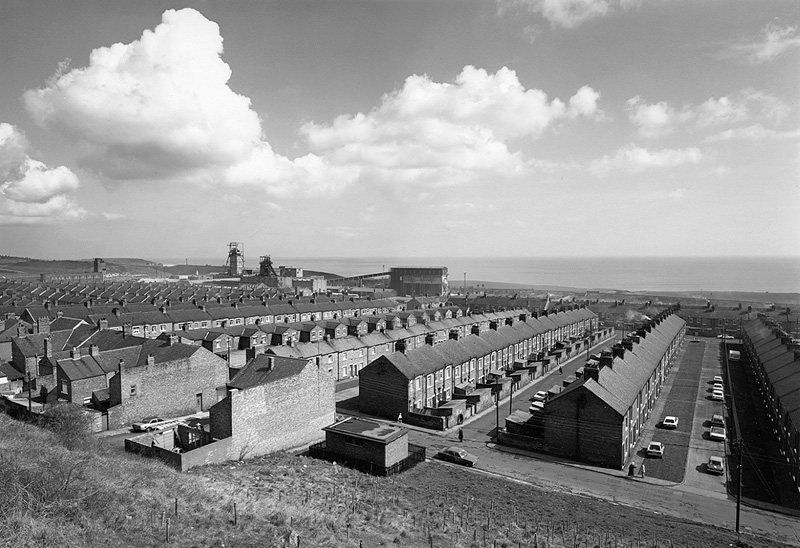
This image by Davies stood out to me more than others as it shows the repetition that we face in modern life. Seeing the rows of houses trailing off into the distance is very impactful as you can see just how repetitive life is in the form of housing.
I find it interesting how all of the people living in these houses probably don’t realize just how similar their home is to everyone else’s around them, and although each house is different inside, with people obviously furnishing it to their liking and making it their own, from the outside everything is uniform and in order.
There is a strange sort of duality to the image that I find fascinating, as each house has its own story; some will be messy and contrasting the unvarying exteriors, where as others will be just as clean and pristine as the rows methodical layout of the buildings. However from the outside, you would never be able to tell which is which.
I find it alluring how coldly and systematically the houses were laid, simply due to the fact that a home is considered to be the most personal thing someone can have. It is clear that the only reason the houses were made in this tightly packed, unoriginal way was for monetary value, but from this image, it makes the whole neighborhood look like a prison, especially with the buildings for mining in the background looking like guard towers, which gives the image a dark impression that something is wrong, like the whole town is trapped in this one tightly packed housing estate. Combine this with the freedom and spaciousness of the ocean in the background, and it once again, has this peculiar duality involving freedom and uniformity.
Gina Socrates:
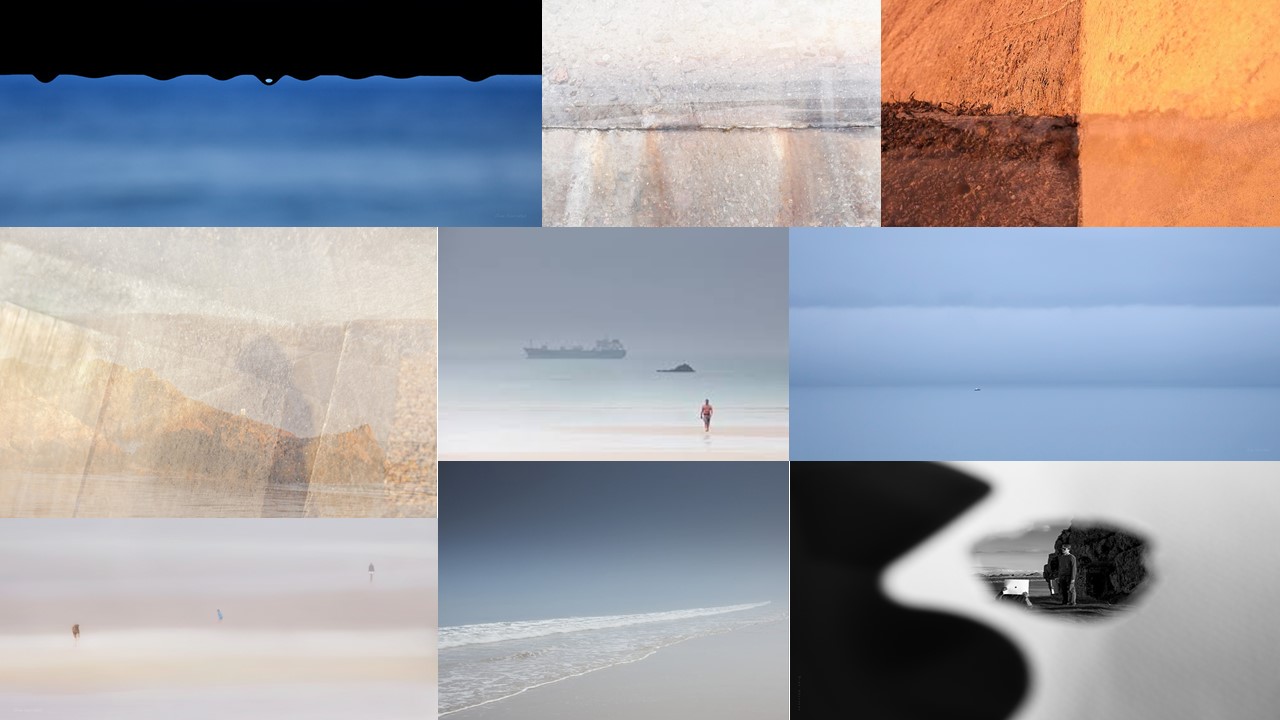
Gina Socrates is a current photographer who is based in Jersey.

Contextually. the sea wall was built by the Nazi’s during the second world war, in order to prevent the British from reclaiming the island of Jersey. The wall was built by prisoners from Russia and Spain, who where hold captive by the Nazi’s. The sea wall has now become a key feature of Jersey Channel Islands, with it useful uses of prevent the island from being flooded at high tides. The seawall holds a lot of history which many islanders are not aware about. Photographer Socrates wanted to capture the seawall in order to present the history of it and to show the “contrast the horrors of war implicit in the wall with the beauty of Jersey’s coast and the life which goes about upon it.” Thus, presenting her artistic aim. When first looking at the image my eyes are immediately drawn to the center of the image, where the subject of the wall/rocks are located. They then move around the image taking in the rest of the detail and scenery found. As an emotional response I can clearly see the metaphorical message trying to show how the sea wall has developed and how it was effected during the second world war, which can be considered emotional as it reflects the negative impact the war had to how beautiful the wall is in Jersey now a days. The image above is an example of a double exposure where two images overlay one another in order to make an overall abstract looking image. In the case we are able to see Jersey beautiful coast line (nowadays) and what looks to be a macro shot of dents and holes (presenting the horrors of the war). The main formal elements which have been presented seems to be space, texture and shape which are mainly presented through the double exposure technique. Both images are presented in color, however the hue seems to have been adjusted as the images look more yellow, which creates a vintage and rustic effect towards the image. This could have also been done by adjusting the white balance on the camera. The overall image seems to be in focus, which suggests that the shutter speed is likely to be quick. It is hard to tell, however I believe that the coastline image presents a large depth of field, which helps to maintain the image being completely focused. It seems that there is an intended blur, which could be because Socrates raised her ISO for one of the images, this has added to the overall vintage effect being created. On the other hand, the blur could have been added using a photograph editor on the computer. Moreover, the aperture could have been set low, as the images seem quite light, which helps the two images to blend in nicely with one another. The two images captured are landscape and follow similar camera techniques, which makes the double exposure seem more natural, the two images fit nicely together. When visiting Socrates work at Jersey’s CCA Gallery, I discovered that the double exposure was created with the camera settings. She changed the settings so she took one image and then another and the camera merged the two images together. The contrasting images are put together to create an overall metaphorical image which successfully meets the aim of the photo shoot. In my opinion I really like her work as I believe that camera settings and her editing work together to create interesting and eye capturing photographs. Her image begins to present the idea of Journey and Pathways, as this is one element which impacted Jersey Channel Islands during the Second World War.

Action Plan:
As an action plan I am wanting to recreate Gina’s photo shoot on Jersey’s sea wall. I want to be able to show the contrast of what the wall is used for now and how it was in the second world war. This will begin to develop my interpretation of Jersey through the second world war. I will look at using a double exposure and different techniques when manipulating my images on photo shoot.

Travis Huggett is a New York City-based photographer who grew up in Rhode Island. He earned a BFA in photography from The Pratt Institute in Brooklyn. Working primarily in portraiture, advertising and fashion, his photos have been exhibited in New York City, Boston and Connecticut. His work has been seen on billboards, as album covers, and on his mother’s mantelpiece.
His work consists of people getting on with their lives on a bus. It shows them taking a journey, whether that be from home to work or on their way to the airport to travel the world. It shows the reality of the real world.
‘For years I’d watched the buses move through the city streets at night, the interiors glowing, the windows framing the riders. They looked to me like photographs. In 2013 I started shooting through those windows. I would wait at bus stops and red lights, quickly scanning the windows for interesting subjects, hoping they’d be in the right seat, in the right light. Over time the photos started feeling less like individual portraits, and more like a broader portrait of my neighborhood and my city.’ – Travis Huggett

Visual response:
In this image you can see a man standing up on a bus, with at first glance he seems to be looking directly at the camera, however as you look closer he seems to be gazing off at something else, maybe at nothing, seeming unbothered or even too tired to care about the fact that a random stranger was taking an image of him. The way he looks gives us in insight into about hard and tiring the daily life of a person can be. The black outline of the window creates a simple yet effective boarder which frames and makes us focus on the subject. The dirtiness of the windows also adds a realistic factor to it, showing the true reality of every day lives of people in New York.
Technical response:
The subject seems to be more focused on compared to the people around him, who seem a little blurred and out of focus. From the image, and how he took it, it’s most likely that he used a long-lensed camera to get the close ups of the photographs he got. It doesn’t look like he did too much editing to the image, the most I think he did was adjust the lighting and the contrast, making the light in the image stand out more. Also, this photograph could also follow the rule of 3s, since there are three people in this image.
Contextual response:
This image was captured for one of his series called Last Night At The Bus Stop. Before he captured images like the one above, he would often feel a strong urge to, due to the interesting people, the light, the windows framing the subjects. He found those all interesting and thought he’d take advantage of it by shooting through the windows, catching interesting characters in their daily lives. He would wait at bus stops at night, look for people who he thought would be perfect for this photoshoot, and wait for them to get into a good light. Then he would take his image.
MARK GRAY:
LIFE AND WORK:
Mark Gray was born in Melbourne, Victoria on February 20th, 1981 to parents with Latvian, English and Irish heritage.
Mark’s primary schooling was undertaken at Bennettswood Primary School in Box Hill South. He then attended Camberwell High School for one year before relocating to Donvale Christian College where he developed a keen interest in graphic design. For his final year of secondary college Mark moved to Box Hill Senior Secondary which offered a highly specialised course in Graphic Design and the Arts.
Brought up in a Baptist family, Mark attended Wattle Park Chapel and became a Christian in his early teenage years.
During Mark’s mid-late teenage years his artistic side began to show, spending many hours painting graffiti art along railway lines and any blank walls he could find. Unfortunately, graffiti artists were viewed as criminals during this time and he had many run-ins with the law. Thankfully times have changed and graffiti now receives the respect it deserves as an art form with many collectors paying thousands of dollars for pieces to hang on their walls. Mark’s experience with graffiti art gave him an excellent introduction to working with colours effectively and composition techniques which came in handy later in life when he first picked up a camera.
Mark had attempted to capture the sunrise with their new digital point and shoot camera but became extremely frustrated because it simply couldn’t do it justice. He soon decided that he wanted upgrade his camera and learn the skills required to accurately record those amazing moments in time. Particularly so that he could share them with the rest of the world.
It wasn’t long after this that Mark realised landscape photography was his one true passion. He sacrificed his extensive social life and dedicated all his spare time to pushing his own boundaries and learning everything required to capture those incredible moments. His background in graffiti and design certainly gave him a head start with composition techniques however the technical side of photography was something very foreign to him. He spent many hours reading photography books, researching information online and using basic trial and error in the field until he mastered the techniques required to capture technically perfect landscape photograph’s.
Overtly ambitious, it was only 6 months later in 2005 when Mark decided to have a go at selling his work. While still working full-time as a web designer and with only a handful of prints in his portfolio, he established his first photography business ‘Australian Landscapes’ and setup a website using his existing web skills. His first clients included a number of family members, friends and even his next door neighbor.
SOURCE: https://www.markgray.com.au/about-us/about-mark-gray.php
LINKS TO LANDSCAPE ROMANTICISM:
Romanticism was an intellectual and artistic movement that originated in the second half of the 18th century. It was a reactionary response against the scientific rationalization of nature during the Enlightenment, commonly expressed in literature, music, painting and drama.
This was regarded as undesirable and leading to the degradation of the humans. According to the romantics, the solution was “back to nature” because nature was seen as pure and a spiritual source of renewal. It was also a way out of the fumes of the growing industrial centers for the new industrial rich.
Gray’s work takes the surrealism approach and puts a very modern spin on it. With the aid of specialized cameras and editing techniques, he creates work that is surreal and very exaggerated, with colors that stand out. He captures images in Australia, the country which he is based in, a place know for its natural beauty and charm.
HIS WORK:

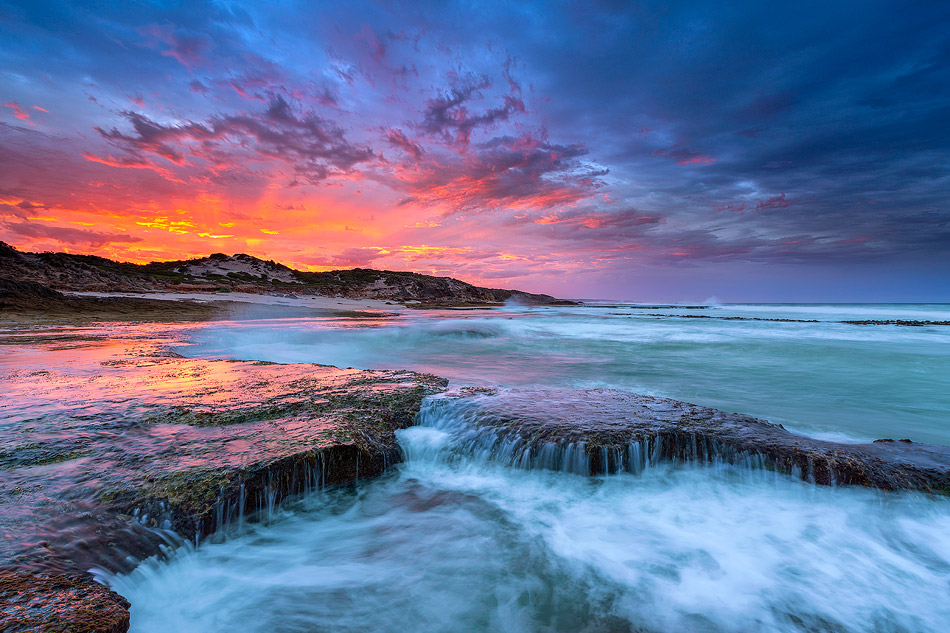
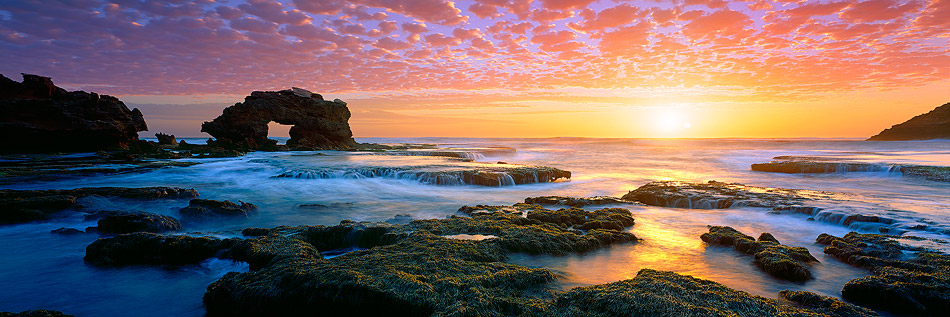

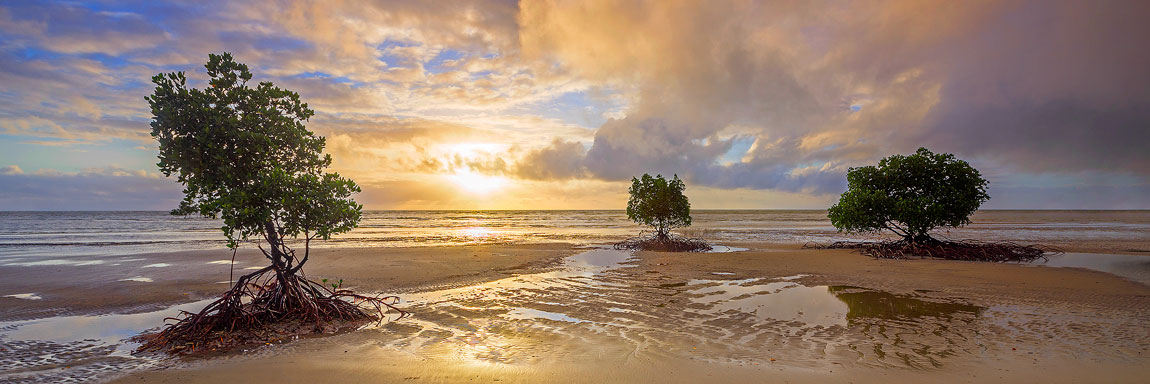
CRITICAL ANALYSIS:
TECHNICAL:
In terms of editing, the saturation of the colors was increased to create the fiery orange sky, and it is probable that the exposure was also adjusted to make the image darker which would allow for the bright colors to pop more. During the photo shoot, it is likely that the exposure was set fairly low in order to allow the colors to pop more and create darker shadows. It is likely also that a tripod was used in order to take the image as it very crisp and the angle is low down yet very straight up. The white balance of the camera which has been used was likely set to 3000k – 4000k as this is most suitable for the time of day when the image was taken. Again, as the time of day when the image was taken means there is less sunlight, it is likely that the shutter speed was quite high to allow more light to go into the camera.
VISUAL:
The most notable aspect of this image is the bright and vivid colors of the sky, being composed of oranges, pinks, purples and yellows which blend together to create a vast expanse of sky. The eye is led to the sky with the ripples of fog which travel vertically up the picture. The eye is alternatively led around the image by the curvature of the rocks and mountain which create a sort of c shape. The rocks and mountain in the background are dark and block out the sky creative a contrast between it and the sky. It also balances out the image and makes it less busy and overwhelming to the eye. There is again contrast created in the image with the dark rocks and the light,pastel lilac fog in the bottom of the image. All the colors are in one way or another mirrored in the bottom half of the image, whether that be on the water or the reflection of the rocks. The different colors in the sky are reflected in the water yet softened out by the fog creating suppleness and fragility. In a way the fog represents the fragility of nature and how easily it can be disturbed. It sits like a vale on top of the water. A repeating pattern is created in the bottom of the image with the repeating rocks which round of halfway in to the image. Most of the light is centered in the middle of the image where the sun reflects and the bright orange is most prevalent. It then darkens of on the sides as the light sunlight fades. Some of the light also bounces of the top of the wet rocks which gives fades them more into their surroundings. The rocks which have been more submerged into the fog fade out more as the eye travels to the center of the image. The rocks in the bottom of the image are in the foreground, yet the eye is still most drawn to the background where the bright orange sun is setting. The rocks situated on the right hand side are in the mid-ground of the image.
CONTEXTUAL:
“I hadn’t been interested in photography before,” he says. “I had a girlfriend who was into it, but I thought, ‘Why would you be into that?’ It seemed like a lot of effort for not much reward.”
As he looked out over the ocean at Apollo Bay he says, “When I saw these colors, I realized these moments can happen.”
He shot some snaps of the scene before him, but he was disappointed with the results. He didn’t feel they did justice to what he had seen. So he started researching photographers and how they captured their images.
“I asked a guy in a store what kind of camera Ken Duncan used, and he told me it was a panoramic, but he talked me out of buying one,” says Gray.
At that stage of his development, it was sound advice. Instead he bought a Fuji S7000, a neat digital unit, and put panoramic photography “on the back burner”. Initially, though, he started cropping the images from his S7000. However, with its fixed lens he says he soon found he was pushing its boundaries. But he was happy to use it as a learning tool, and he kept the camera for around nine months.
CONCEPTUAL:
Gray aims to, “get it right in-camera as much as possible” and doesn’t use colour filters. “If the colour’s not there to begin with, I don’t feel I should have to add the colour. I’m quite happy to go back to a location and wait for what I want.”
Despite his youthful training in digital technology, he’s keen to minimize any post-production work with his images. “If you’re spending more time editing on a computer than shooting the image, the work is becoming digital art,” he says. “One thing that really inspired me to get into photography was that I was sitting in an office in a corporate environment. I feel more at home in nature. Really, my view is that some people enjoy editing on a computer and I think that should be called digital art.”
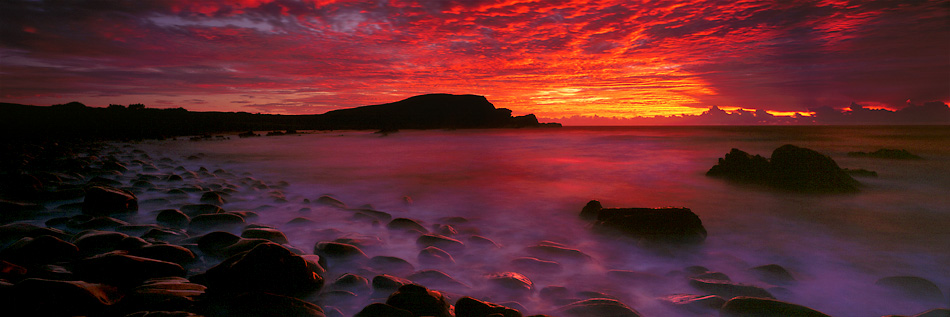
For this photo shoot, I wanted to look at landscapes and movement. I also want to look at portraits as I can also show journeys and pathways with people. I wanted to convey the idea of going on a mental journey and discovering yourself. I also wanted to look at physical journeys such as going out on a walk or going on trips to places around the island.
I chose Andrew S Gray because I really enjoyed playing with the technique he uses and experimenting in the style of ICM. I already have some photos that I took at the start of this course which I think are some really great photos and shows the technique off really well.


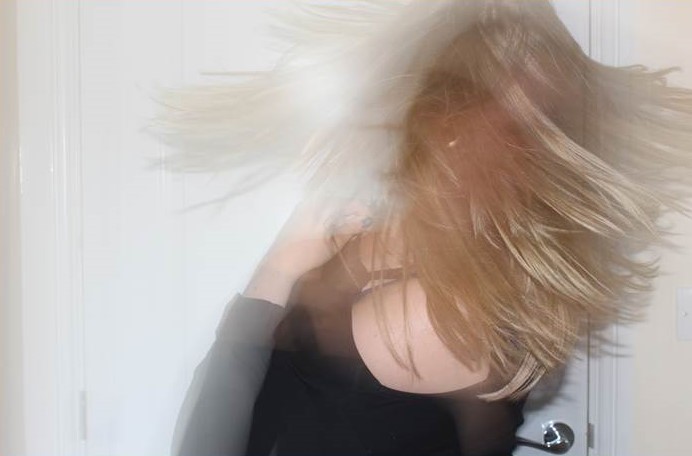
I want to work with this style of taking photos, I really like how these photos came out so in this photo shoot, I want to achieve the same look.
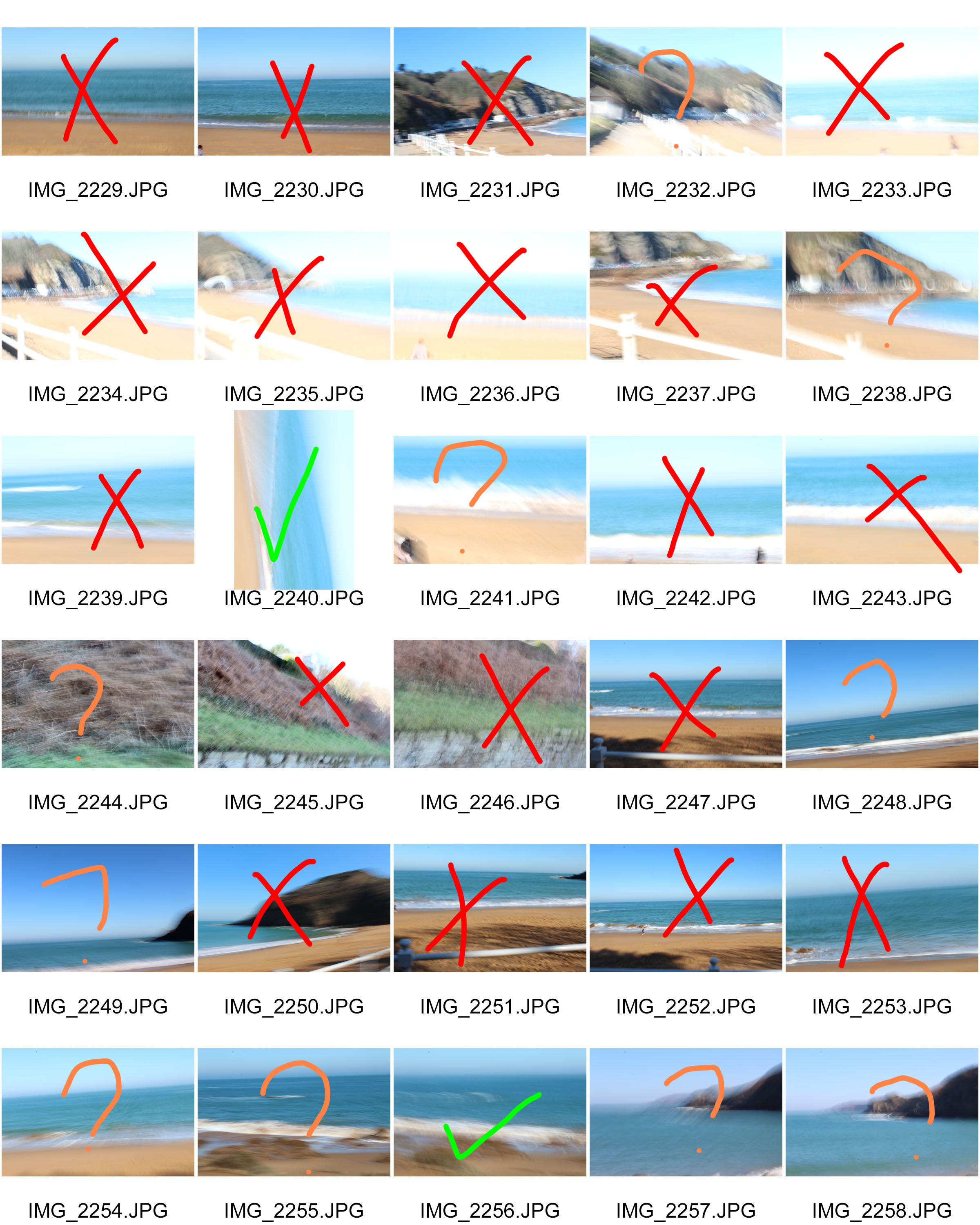

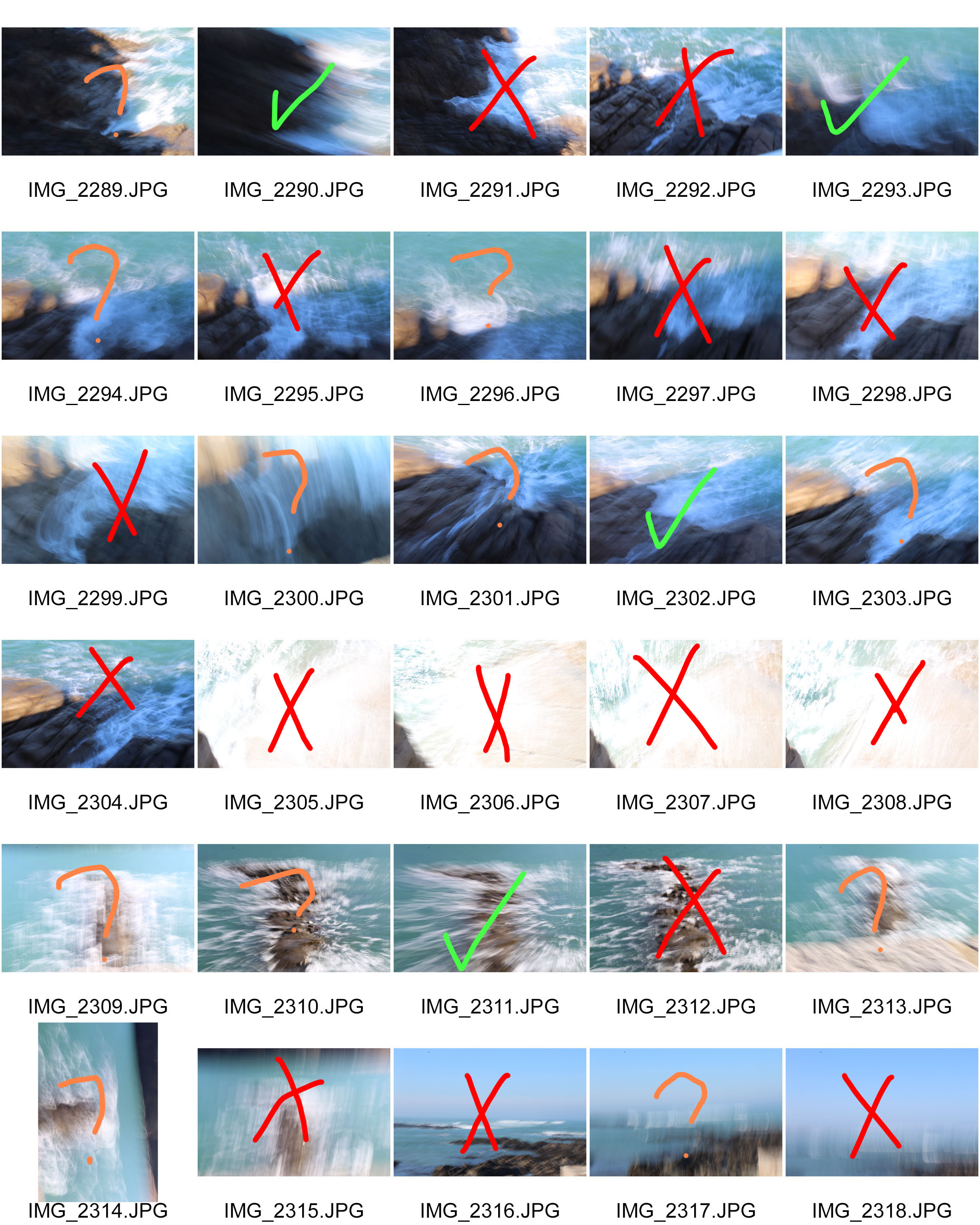
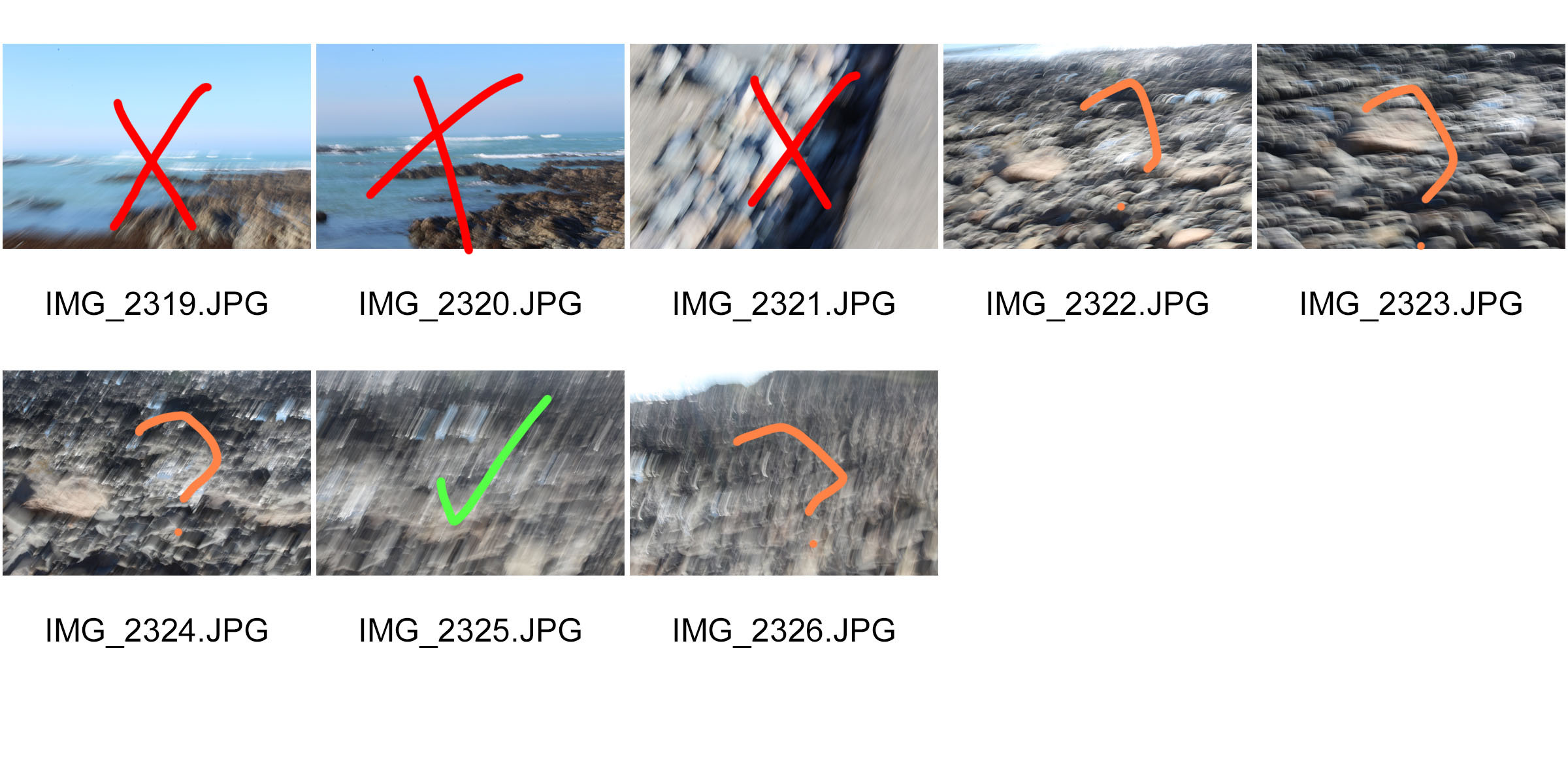 Final Images (unedited):
Final Images (unedited):



I chose these images because I think they show the technique of ICM really well and I think they look the most visually appealing. I am really happy with how these photos turned out, but I think that they do need a bit of editing to enhance the strength of them. M camera was set to shutter priority, my ISO was 400 and the F number was between 4-10, depending on how much sun there was.
I used Photo Shop to edit these photos. 
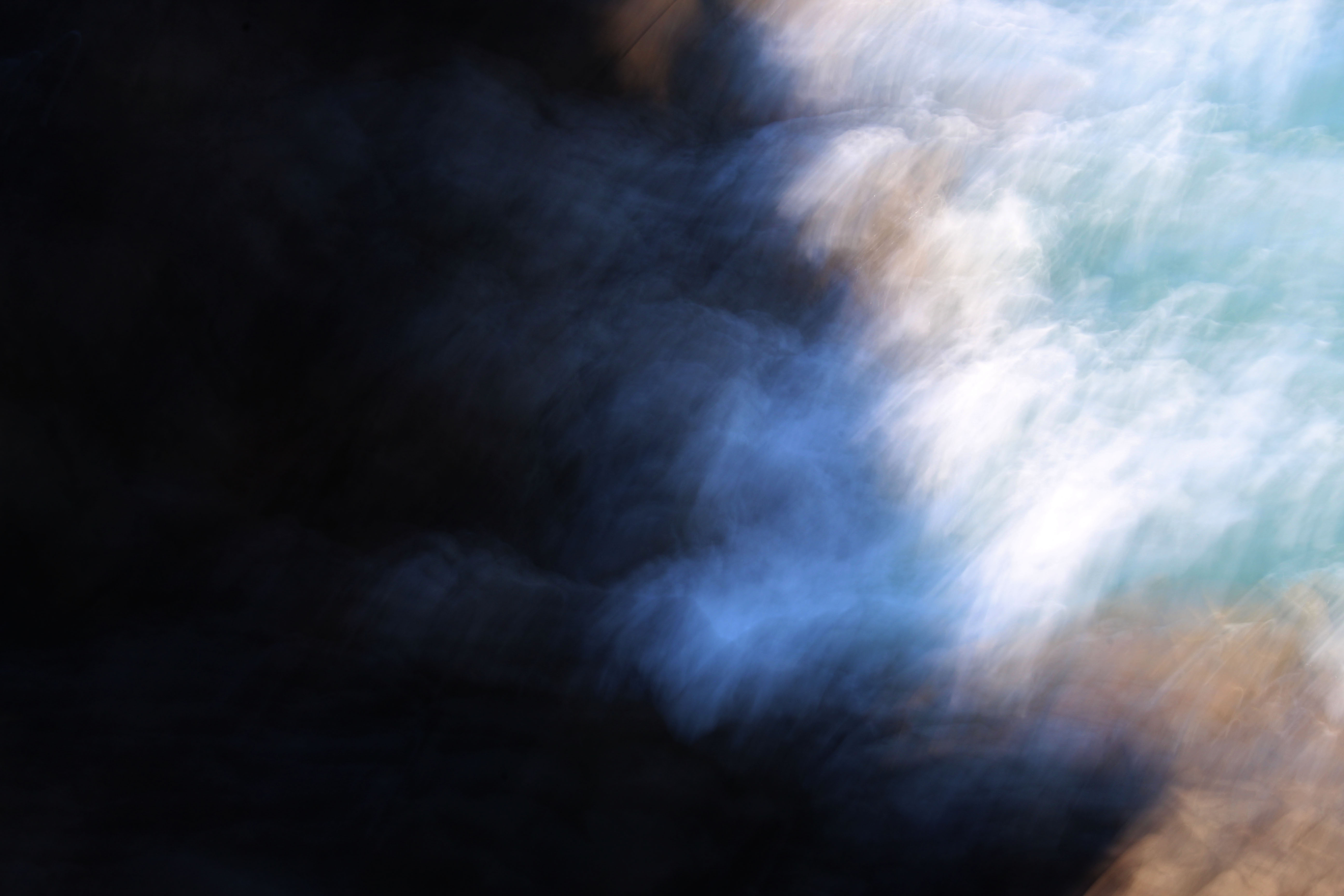

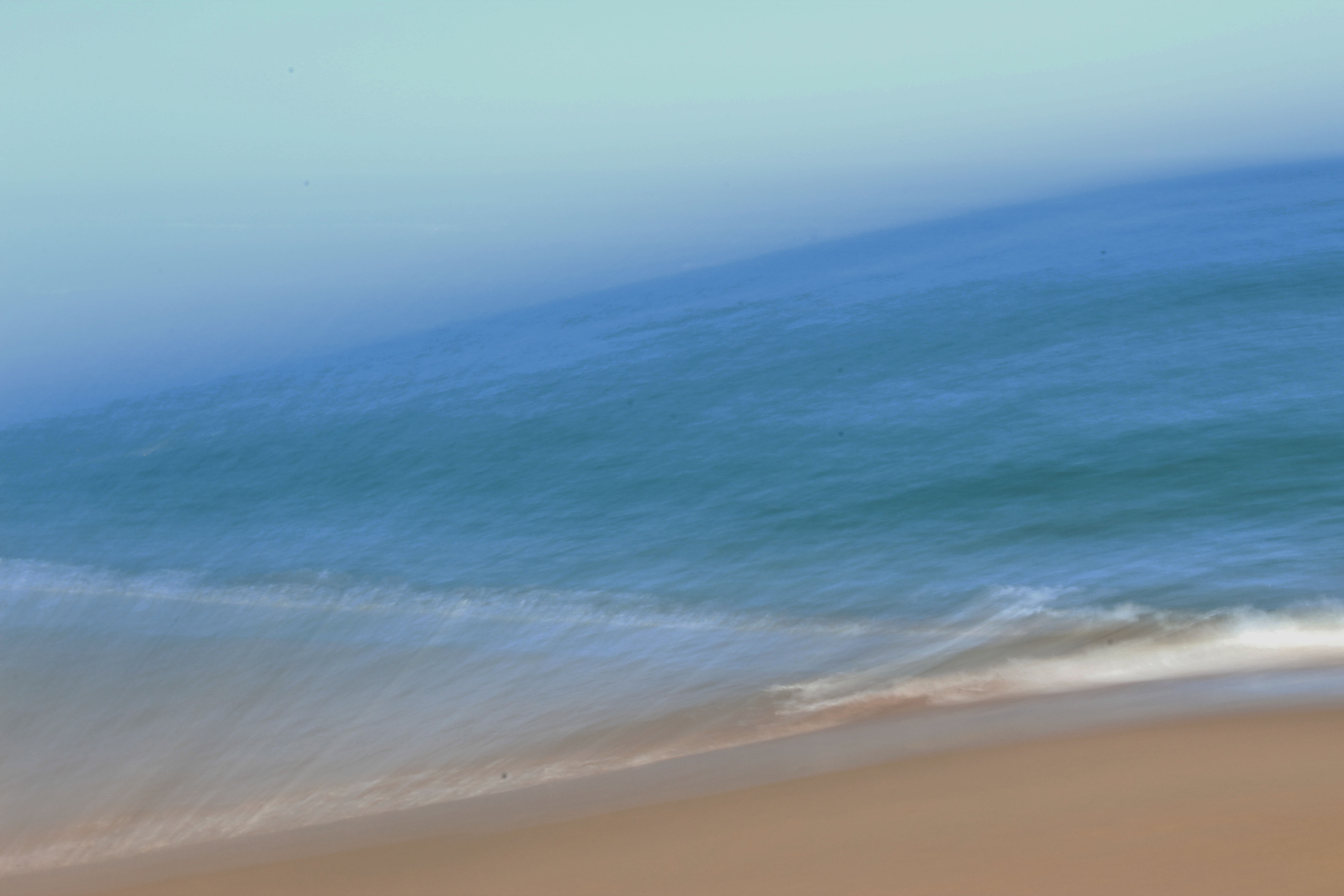
I really like how these edited photos turned out. I feel like I have captured the theme of journeys and pathways well as these photos were taken when I went to the beach with my parents. I’m also happy with the editing of these as I believe they now look a lot better than the original photos, as some photos were too over exposed.

In the 1970's Carinthia West was an actress and journalist and in her spare time she photographed many of her friends. In that era they turned out to be some of the most famous musicians, actors and musicians. West's work is viewed as extremely intimate and it shows a private side of the celebrities that is often hidden and secluded from the public eye.
Carinthia describes how she remembers her great-grandmother being a very keen photographer and how when she was 9 years old she received a little plastic camera. In the early 1970's however, West received a Canon EF which was a 35mm film camera. She toyed around with exposures as she took photos of her friends.

Truman claims that he's "been taking photos for as long as I remember" and that when he was a teenager he had a passion for black and white photography.
Truman completed a degree in geology, however realized that he wanted to pursue his true passion - photography. He later began working with Storm Thorgerson and later when he passed away, became one of the three individuals who storm left his studio for.
A lot of Truman's work is conceptual album covers that feature multiple indexical meanings that the viewers need to analyse to be able to interpret. Him and Storm Studios have created album covers for artists such as Pink Floyd, Muse, Biffy Clyro, The Steve Miller Band, Ian Dury And The Blockheads, Pendulum, The Cranberries, The Mars Volta, Alan Parsons.

Mike McCartney is a known as a rock photographer, who was known to take photos of his older brother Paul McCartney and his band: The Beatles. Mike particularly liked taking photos with a flash gun and gained the nickname "Flash Harry". Mike has released multiple books of photos he's taken of The Beatles and he also took the photo of Paul McCartney's album cover for Chaos and Creation in the Backyard.